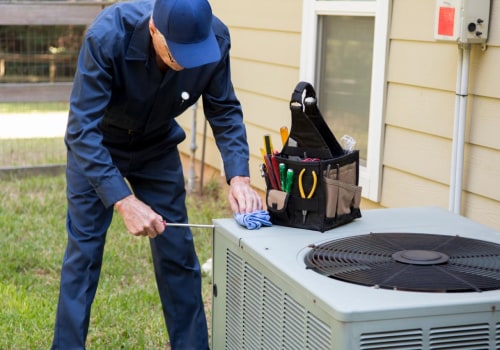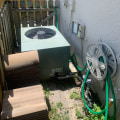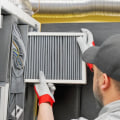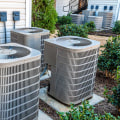Heat exchangers are essential for heat transfer, moving it from one place to another. They are used in both heating and cooling, such as in an air conditioner which utilizes a chemical liquid called refrigerant to convert heat into cold air that is expelled through ducts and vents. Gas furnaces also use a heat exchanger to heat the indoor air with the furnace flue gases and distribute it throughout the space, with the exhaust gases vented through an outdoor chimney. Integrated heating and air conditioning systems are ideal for buildings without enough interior space for split system components.
It is important to have a professional analyze your air conditioning problems to ensure you are prepared for any weather changes. An HVAC system performs many functions at once and has more than one purpose. When cold temperatures arrive, the combustion chamber, also known as a burner, is the part of the system that heats cold air. To save energy and avoid issues with the air conditioning system, it is important to keep debris away from the condenser.
This article provides an overview of the six main components of a heating, ventilation and air conditioning system.
Heat exchangers are used in various industrial processes, such as power generation, chemical production, air conditioning systems, oil and gas industries, and more.Air conditioning systems are designed based on thermodynamics, heat transfer and fluid mechanics principles. The heat exchanger inside the furnace is the component of the HVAC system that heats the air. Problems with the heat transfer process can reduce indoor air quality and damage the HVAC system. It is beneficial to have some knowledge about the components of your HVAC system and who to contact if you have a problem. Air conditioning alone cannot compensate for intrinsic safety design features such as structural stability, coatings, area segregation, fire protection systems, etc.
The fan in your HVAC system blows warm air from your home through the return ducts and through the evaporator to cool it before distributing it through ducts into your home's rooms. As an expert in HVAC systems, I understand how important it is to be aware of all of its components. A heating, ventilation and air conditioning (HVAC) system is composed of six main components: heat exchangers, combustion chambers, condensers, evaporators, fans and ducts. Heat exchangers are used to move heat from one place to another. They are used in both heating and cooling applications such as in an air conditioner which utilizes a chemical liquid called refrigerant to convert heat into cold air that is expelled through ducts and vents.
Gas furnaces also use a heat exchanger to heat the indoor air with the furnace flue gases and distribute it throughout the space with exhaust gases vented through an outdoor chimney. The combustion chamber or burner is responsible for heating cold air when temperatures drop. Condensers are used to save energy by keeping debris away from them. Evaporators are used to cool down warm air before distributing it through ducts into your home's rooms. Fans are used to blow warm air from your home through return ducts and through evaporators.
Lastly, ducts are used to transport heated or cooled air throughout your home. It is important to have a professional analyze your HVAC system problems to ensure you are prepared for any weather changes. Problems with the heat transfer process can reduce indoor air quality and damage your HVAC system. Having some knowledge about its components can help you identify any issues quickly and contact a professional if needed.











